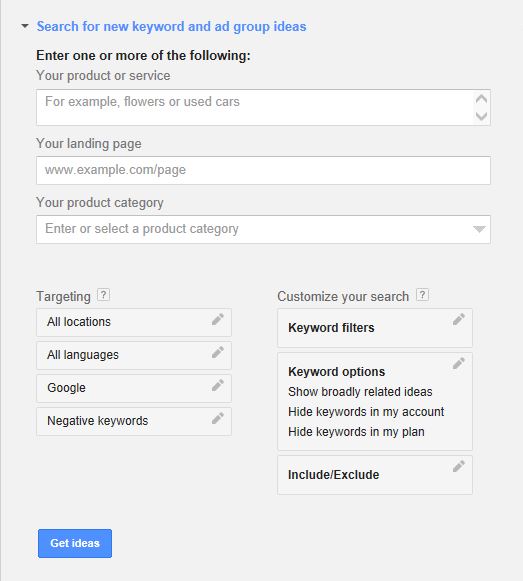The student decision journey has moved online. One in ten prospective students now search exclusively online for classes and programs, a Google and Compete study found. To tap digital opportunities, marketers need to reach
Take a glimpse at today’s college classrooms, and you’ll see a much more eclectic student body than just a decade ago. There’s the working mother of two, the retired teacher, and the middle-aged career changer. Technological advances have made education more accessible, more flexible, and more effective for students like these and so many more. Even for “traditional” students, you can see how technology has transformed everything — how they read, study, and learn. Now take a step back, and you’ll probably notice something missing in many of these modern “classrooms”: the classroom itself.
Thirty-two percent of students now take at least one online class, according to the latest
report by the Sloan Consortium, a barometer of online learning in the United States. Digital has forever changed the traditional college campus: Now, any place with an internet connection is a potential seat of learning.
But it’s not only the way people study that has been transformed by technology; it’s how potential students search for, discover, and choose institutions and courses. The education decision journey is moving online — nine in ten enrolled students have used the Internet to research higher education institutions, according to a 2012 study conducted by Google and market analysts Compete. And marketers need to move with it.
We’re at a turning point. Industry forces are challenging the bottom lines of universities. Post-secondary enrollments declined in Fall 2011 for the first time in 15 years, according to
Department of Education figures. Not only is there a smaller pool of potential students, but the competition to attract them is intensifying. Education seekers have more options than ever before — many traditional brick-and-mortar schools are bringing their programs online, while MOOCs (
massive open online courses) have emerged as a viable way to obtain college credit.
Fortunately, the overall demand for education is still strong. Education-related search queries grew year-on-year in the first quarter of both 2012 and 2013, Google’s
education search analysis indicates. However, many marketers are struggling to effectively use the tools at their disposal to capture that demand.
The key is to engage potential students in the right mindsets, on the right channels, and to enable them to experience all the great things your school has to offer.
Seventy-seven percent of education seekers will first visit a school’s website at least two weeks — and often two months — before taking action, the Google and Compete study found. Education is a highly-involved decision and one that requires many different touch points along the way. Asking prospects to fill out a lead form too soon might result in short-term success for a marketer, but in the end, both the student and the school will lose. The key is to engage potential students in the right mindsets, on the right channels, and to enable them to experience all the great things your school has to offer.
From leads to value
When institutions use digital to its fullest, they focus on engaging the most valuable prospects. “It is not just about driving leads,” says Jeff Rinehart, chief marketing officer for education technology company 2U, which works with universities to transform on-campus programs into web-based courses. “It’s about driving quality leads who are really interested in these programs and who can be admitted to these programs. And that the right people succeed in these programs. So it’s truly about optimizing our value.”
A student’s journey might not always be linear, adds Ross Woodard, chief marketing officer for Bridgepoint Education, which owns and operates
Ashford University in Clinton, Iowa. Some will simply register, study, and succeed. “But there are times when a 34-year-old with a family starts, then life happens, and they have to discontinue for a period of time — and then they do come back,” he says. “Both scenarios exist. We measure it all the way, and then we measure if somebody does come back, what type of channel piqued their interest to come back.”
The journey is multi-screen
When Ashford University looked at students’ new decision journey, the school found prospective students often visited its website on smartphones early on and then returned later on desktop for more information. So the university simplified its mobile website to focus on three features: embedded video, programs offered, and a short contact form. “It’s about optimizing the experience as it relates to smartphones and tablets,” Woodard says.
“If you went into our Ashford University site on a mobile without it being optimized, it would just be overkill. So we made it very simple — the videos talk about an emotional experience as it relates to the school, and the short form allows them to conveniently enter an inquiry,” Woodard says.
Having a
cross-device strategy is critical. Half of all prospective students use mobile devices to research higher education institutions, according to a study Google did with Nielsen this year. And Google’s internal data also indicates that by 2014, 40 percent of education search queries will happen on mobile devices. We encourage schools to optimize their mobile websites with tailored content and to take advantage of new advertising technologies that allow you to more effectively and efficiently reach mobile users.
Seeing is believing
The
University of Phoenix, similarly, has looked at its online content and how it helps prospective students along their journey. “We’re trying to actively drive traffic to our website, and we spend quite a bit of time making sure that the site has the kind of content it needs,” explains Les Lifter, VP of Brand Marketing.
This has led Phoenix to produce a “massive amount” of video content on YouTube, which “really provides a full picture for prospective students,” Lifter says. Education seekers are increasingly looking to video to gather information about schools, with a four-fold year-on-year increase in those using video in 2012, the Google and Compete study found. Our
education brand research also indicates that video views can lead to a significant increase in metrics like affinity, consideration, and brand awareness.
University of Phoenix’s latest ad campaign garnered more than 2.4 million views on YouTube in its first week after launching on TV, suggesting that Lifter’s strategy to create content that “deeply engages while explaining the school’s unique platform” is working.
Explaining how its platform differs from other options is the priority for 2U’s marketing. They want prospective students to be able to visualize their programs, which include a live weekly online session for each course.
“It’s hard to get that across with words — live, cutting edge, synchronized — no matter how you put those words together — it’s hard to get them to resonate. You have to see it to understand it,” 2U’s Rinehart says. “That’s where video comes in — to be able to show what those class sessions look like and show you’re getting a real Chapel Hill professor in the top-left corner and ten students all working through this material. You can’t make that come alive in words, it’s got to come alive through things like video.”
Learn the new landscape
“Education is likely the most considered purchase that any of our students will ever make,” Lifter says. “This is a person that needs a lot of information. You try not to bombard them, obviously, but we want to make sure they have everything in front of them. Digital provides us the ability to easily and succinctly convey that information and then provide depth to that conversation.”
Although it’s difficult to predict how the education landscape will evolve in coming years, it’s clear that the web has a permanent place. The question is: How will educational institutions show their school colors online?
The institutions that win the new moments that matter will be those who understand the new education decision journey. By taking full advantage of digital tools to tailor their messages, schools can leverage the power of video to shape perceptions and deliver content that’s right for their devices and their decision journey stage. And ultimately it means institutions can focus on directly engaging the prospects who are mostly likely to become their next success stories.

